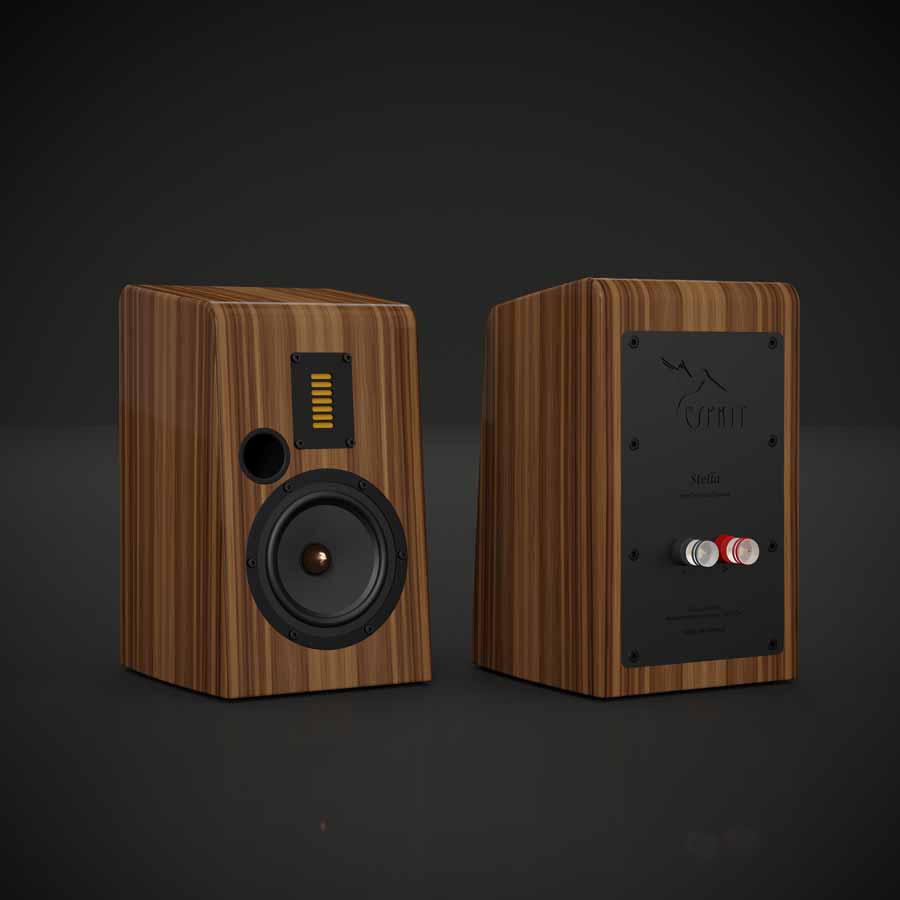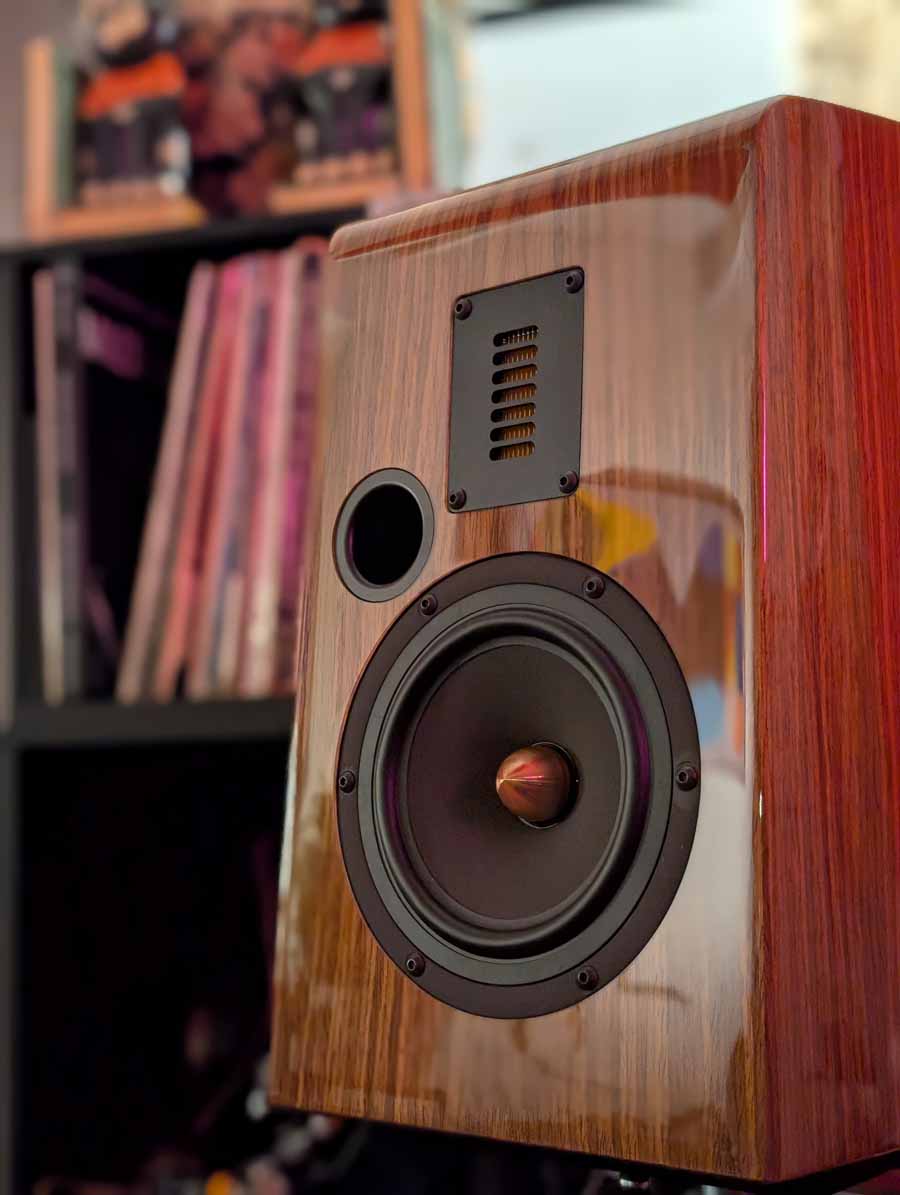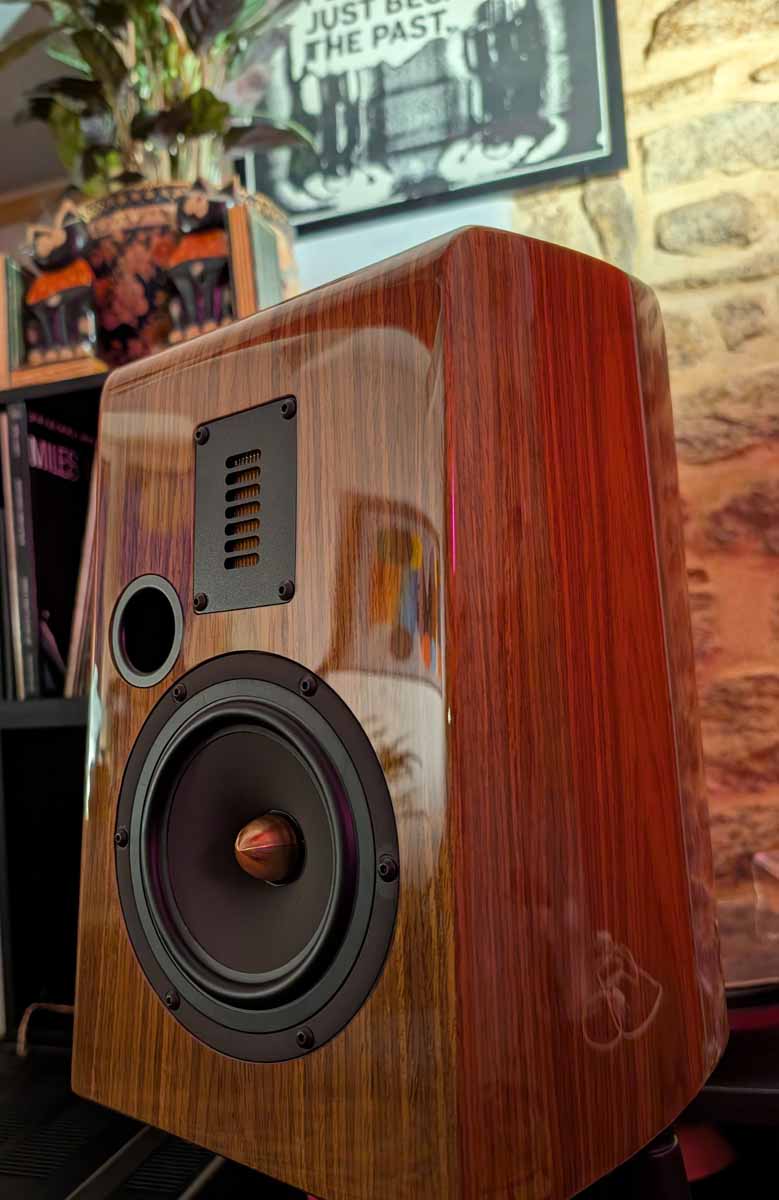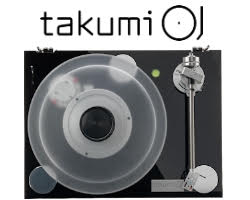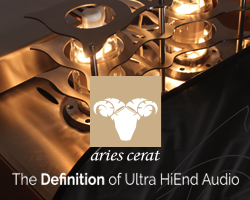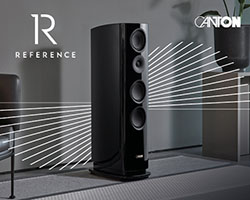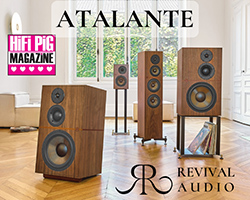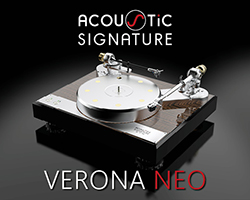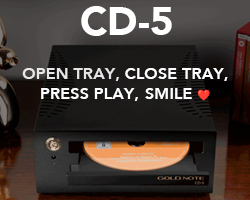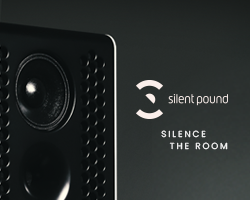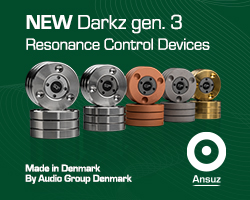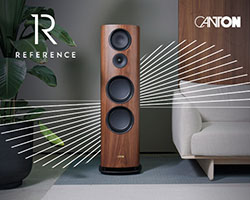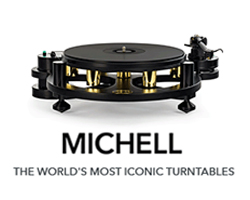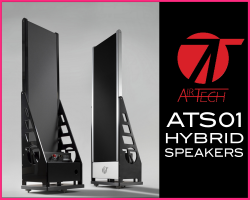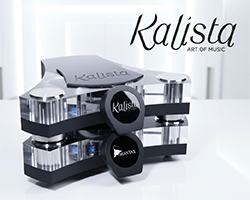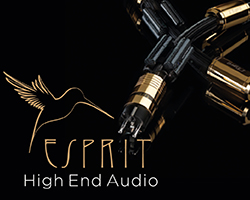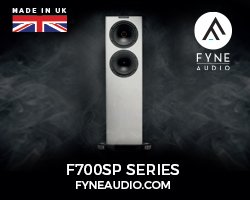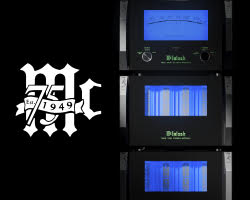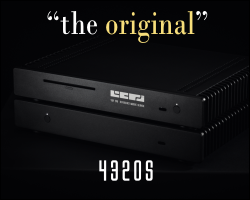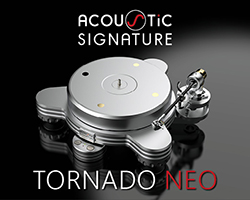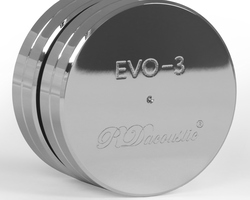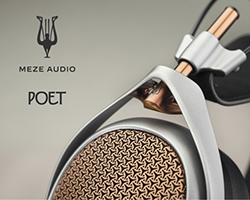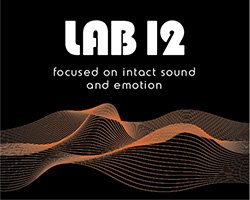ESPRIT HIGH END AUDIO STELLA LOUDSPEAKERS
Esprit High End Audio Stella Loudspeakers are a standmount from this French manufacturer, previously well known for their audio cables. Stuart Smith takes a listen to this luxurious standmount loudspeaker that is proudly “Made In France”.
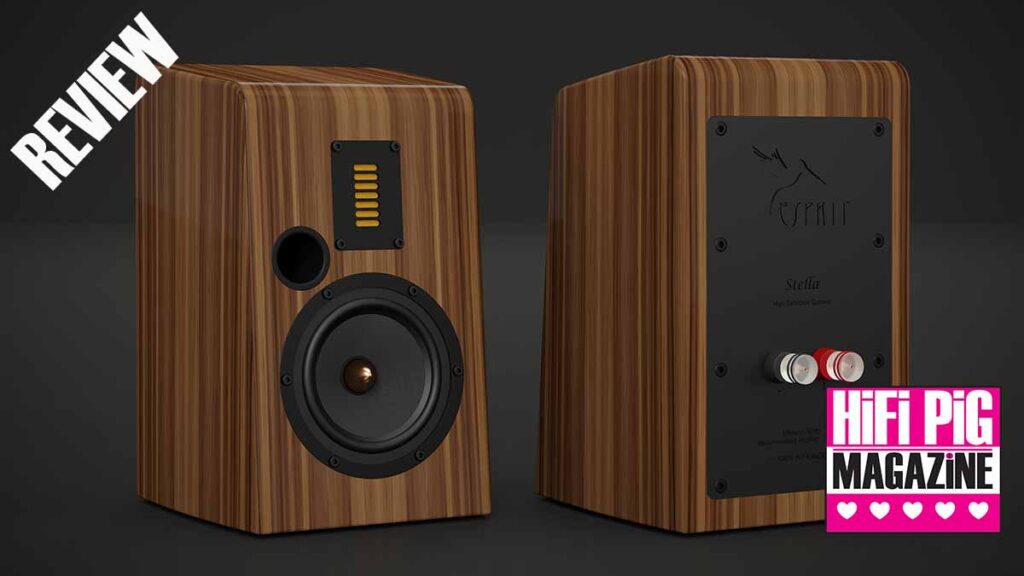
Esprit High End Audio is a French company founded in 1997 and based in Confolens, a small town in the southwest of France. From the beginning, their focus has been on creating audio equipment that is designed, engineered, and built entirely in France. The company takes pride in this approach, emphasising craftsmanship and control over every stage of production. Their catalogue covers cables and loudspeakers (Stella, Amelia, and Lisa), which they design with the same principles in mind: attention to acoustic detail, careful component selection, and a preference for handmade assembly rather than mass production.
Esprit describes itself as a small, independent company committed to developing products that are both technically sound and musically satisfying. Their philosophy is to combine established acoustic knowledge with careful listening and practical experimentation. This has led to a reputation for producing gear that appeals not just to the technically minded but also to listeners who value musical expression. Over the years, Esprit has steadily built a presence in the high-end audio world while keeping production firmly rooted in their French base.
The Stella is the smallest of Esprit’s loudspeakers and is the only standmounter. Like the rest of Esprit’s output, it is designed and manufactured in France, making use of both modern technologies and traditional cabinet-making techniques.
The finish and build of the Stella speakers is pretty impressive and the lacquer on the speakers looks to be many, many layers deep. They certainly look the part, though I’d have preferred mirror images, with the port to the left on one and the right on the other.
Around the back is a large plate onto which I assume the crossover is positioned. Attached to this are the single pair of binding posts that feel very nice in use and work very well.
Packaging is excellent, and they arrived triple boxed, so it was a bit like a game of pass the parcel to get into the speakers. I approve!
All in all, and from a build and design perspective, this is a very well-conceived and implemented loudspeaker
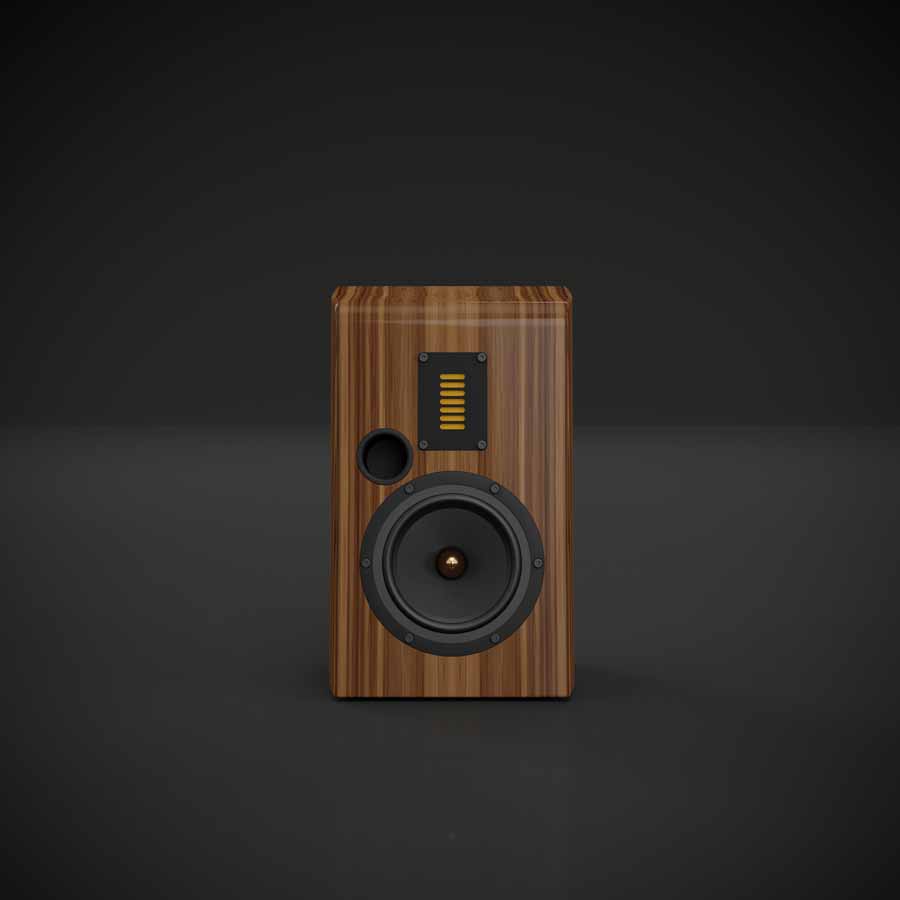
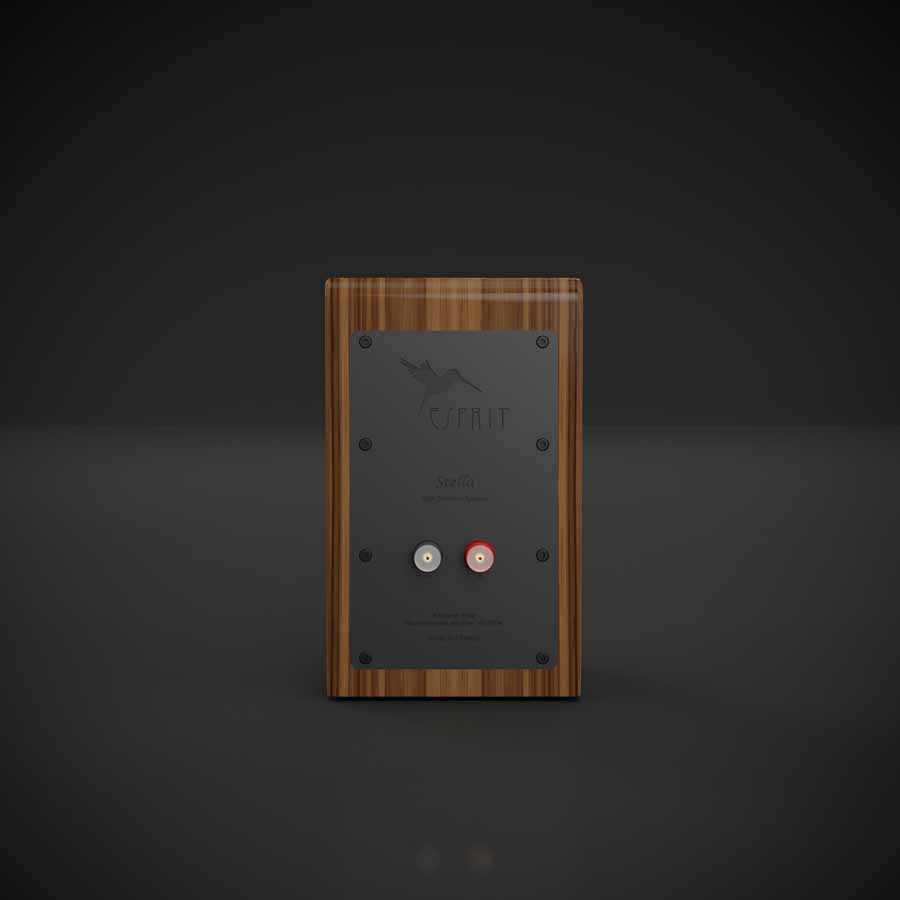
BUILD AND FEATURES OF THE ESPRIT STELLA
The Stella is a compact two-way standmount loudspeaker. The design is based around a combination of an Air Motion Transformer (AMT) tweeter for high frequencies and a 15cm Nextel-treated paper mid-woofer for the midrange and bass. The two drivers are integrated via a 6dB per octave crossover, chosen for its simplicity and phase coherence. This arrangement is supported by a bass reflex design to extend the low-frequency response.
The AMT tweeter is a key element of the Stella’s design. Originally developed in the 1970s by physicist Dr Oskar Heil, AMT drivers use a pleated diaphragm that moves air in a lateral squeezing motion, rather than the in-and-out piston movement of a conventional dome tweeter. The advantage of this approach is higher efficiency and faster response, qualities that can give the treble a smooth and dynamic character. By including this tweeter, Esprit has opted for a technology that is relatively uncommon in compact standmounts, setting the Stella apart from the usual dome-based designs. Anybody who reads my reviews on a regular basis will know that I have a bit of a soft spot for AMT tweeters as I think they add some kind of airy magic around the top end.
For the midrange and bass, the Stella uses a 15cm paper cone treated with Nextel, a coating designed to improve rigidity and damping. The choice of paper as a base material reflects a balance between stiffness and natural resonance control, while the Nextel treatment adds an extra layer of stability. In practical terms, the driver is tasked with handling everything from the lower midband down to the 50Hz region, where the bass reflex tuning takes over. That bass reflex port on the front of the speakers is a smart move, as in my experience, it allows for easier placement than rear-firing ports.
The crossover is deliberately simple. A first-order slope at 6dB per octave is used, which minimises phase distortion and ensures a gradual handover between the drivers. The components used in the crossover are notably high-end. Esprit specifies Duelund capacitors made with Virtual Stack Foil technology and pure copper, chosen for low loss and minimal distortion. The inductors come from Mundorf and are also made from pure copper, which again is intended to reduce distortion and preserve signal integrity. These choices indicate that Esprit has given as much attention to the electrical parts of the design as to the drivers themselves.
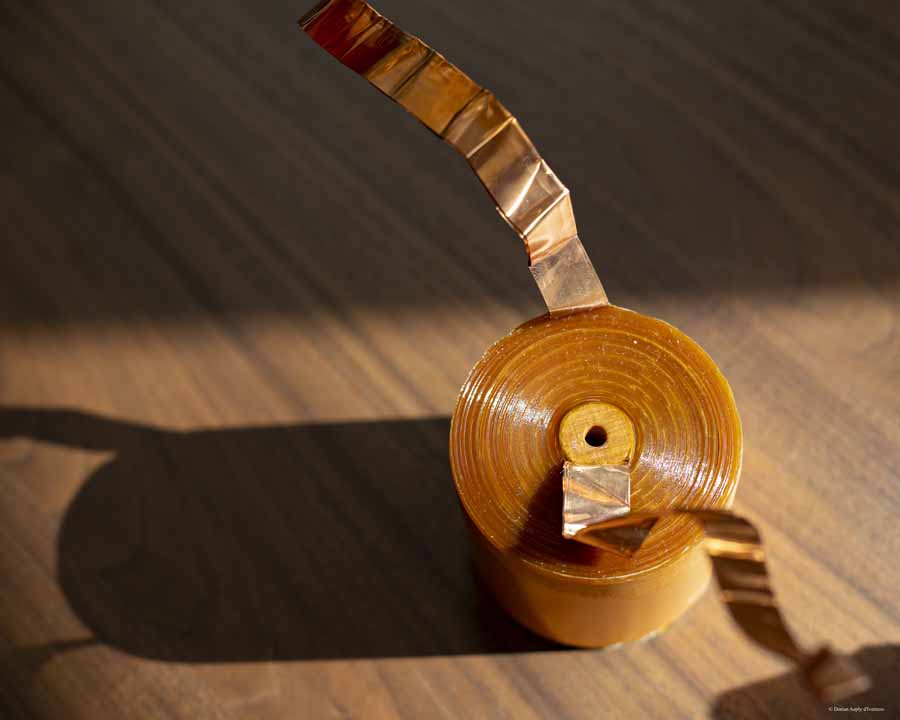
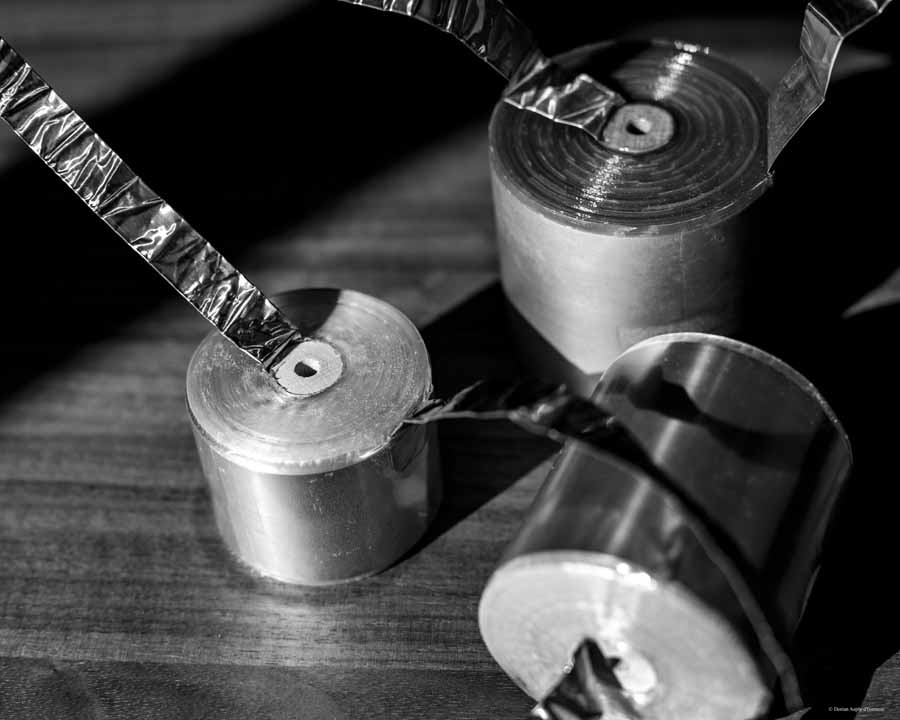
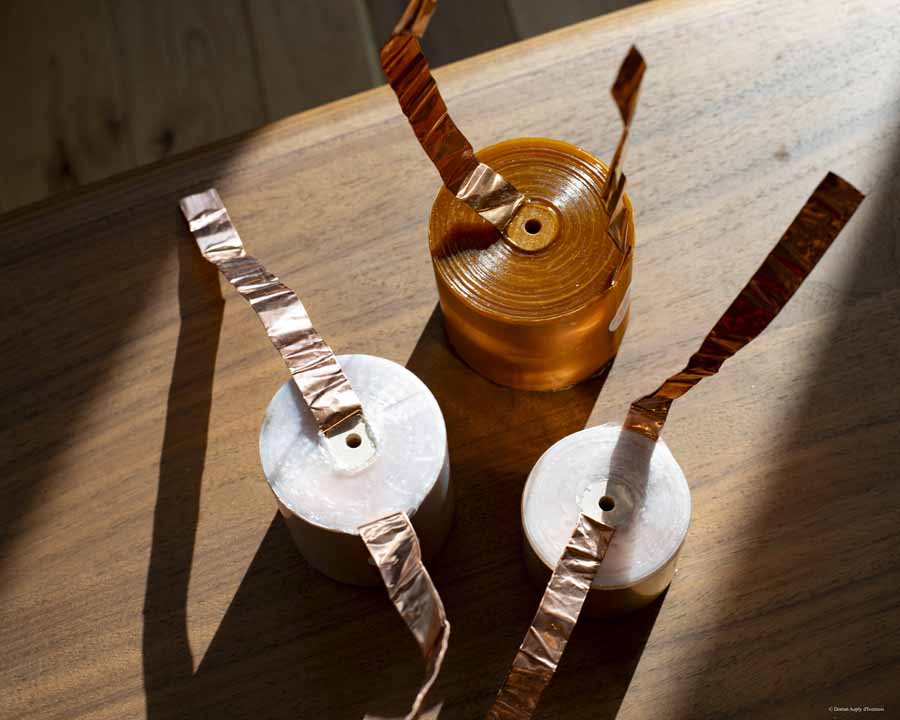
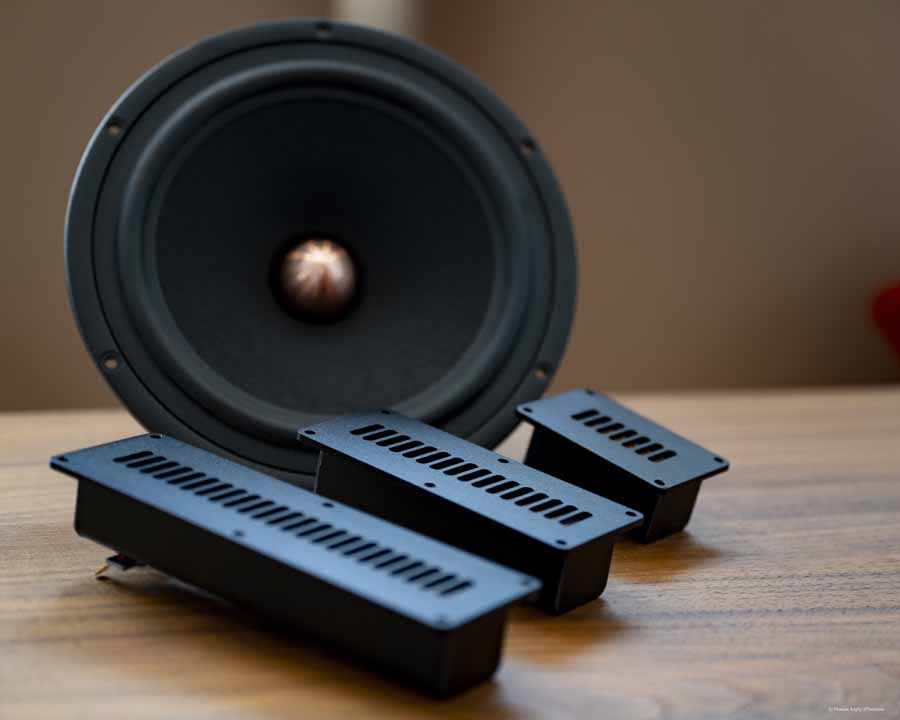
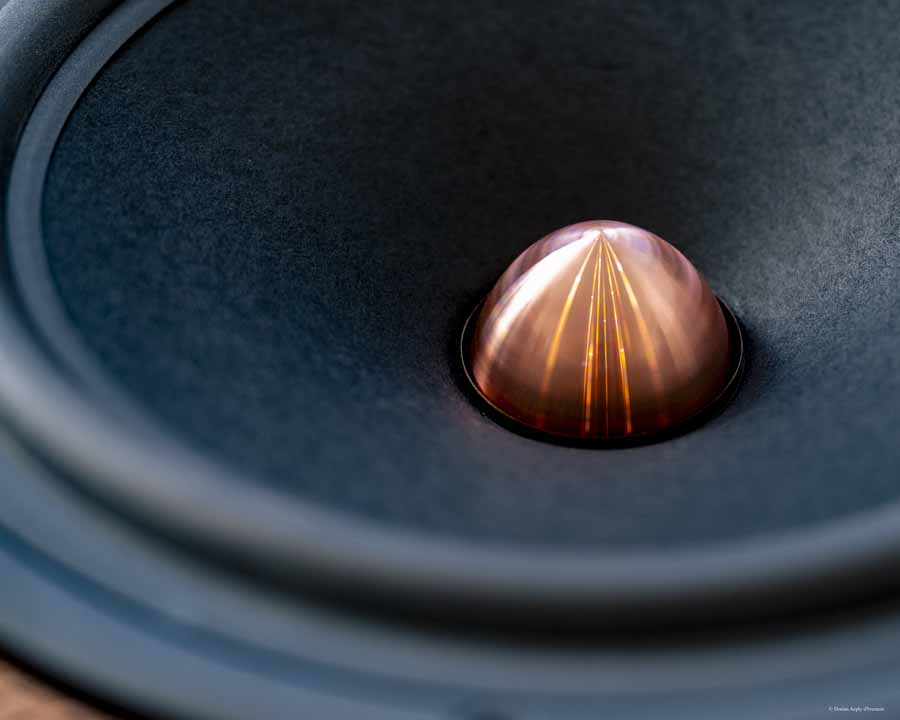
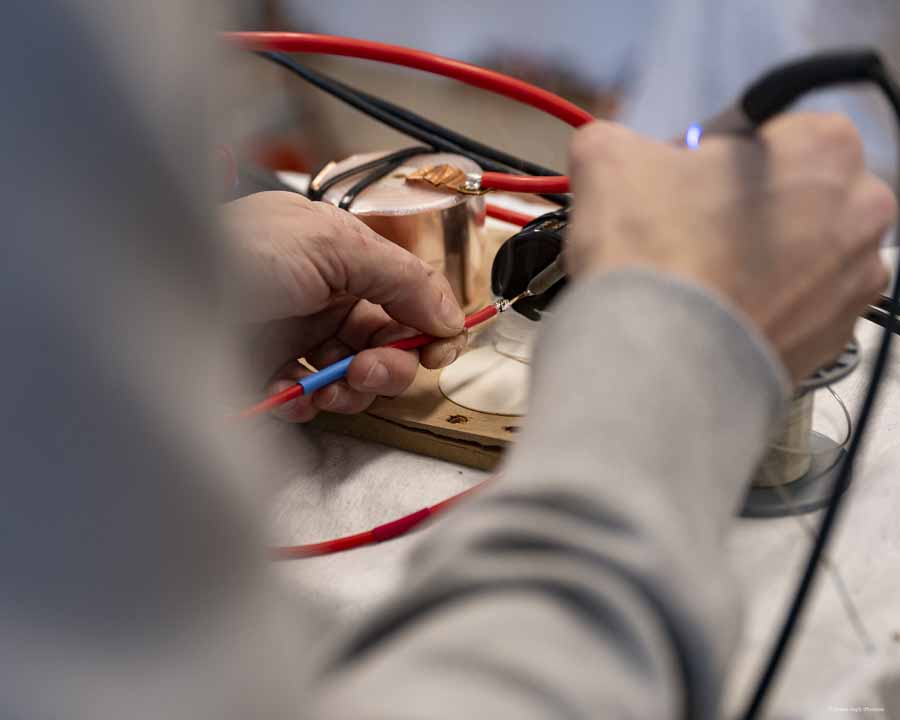
The cabinet is made from MDF and is designed without parallel walls. This construction helps to suppress internal standing waves, which can colour the sound if left uncontrolled. The overall enclosure is compact, intended to be used on stands. Being handmade in France, each pair is assembled and checked individually.
In terms of specifications, the Stella is rated with a frequency response of 50Hz to 30kHz, a sensitivity of 87dB, and a nominal impedance of 4 ohms. Esprit recommends amplifier power between 40 and 100 watts, which places the loudspeaker within the reach of a wide range of amplification, though in practice, a stable amplifier is needed to handle the 4-ohm load.
Overall, the Stella presents as a carefully considered compact loudspeaker. The use of AMT tweeter technology, a treated paper mid-woofer, a straightforward but high-quality crossover, and an enclosure designed to suppress resonances all point towards a design that prioritises accuracy and coherence. While the specifications suggest a standmount that will not reach into the deepest bass, the emphasis is clearly on balanced performance, extended treble, and careful integration between drivers.
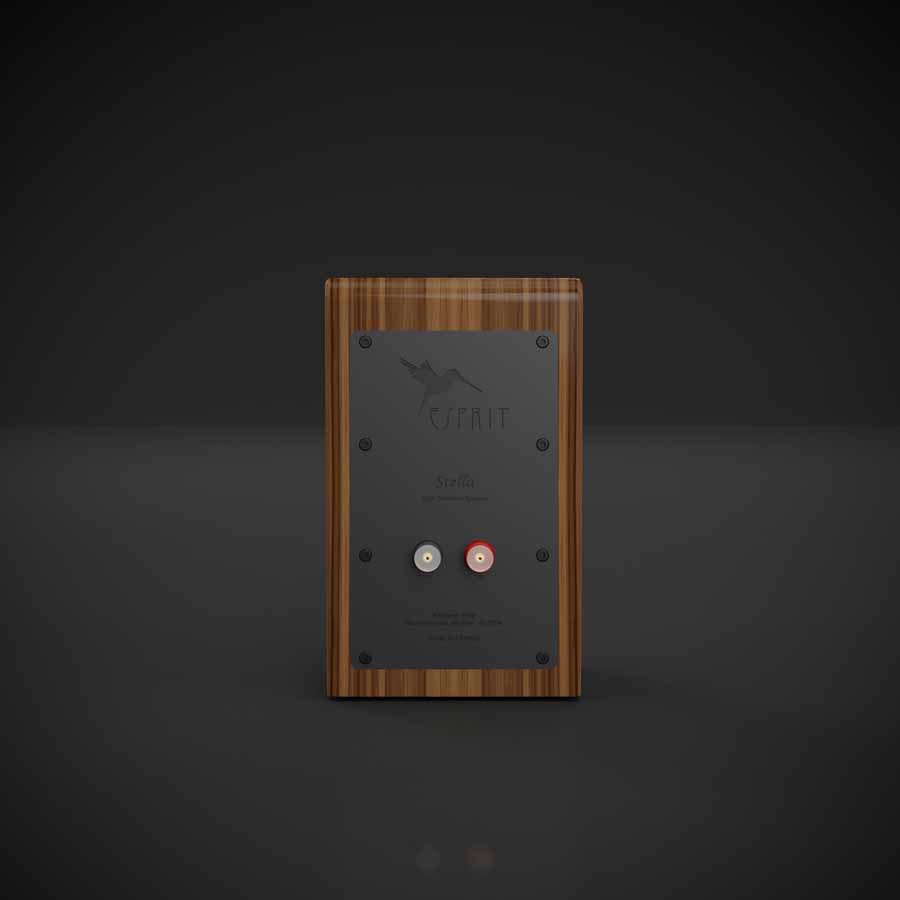
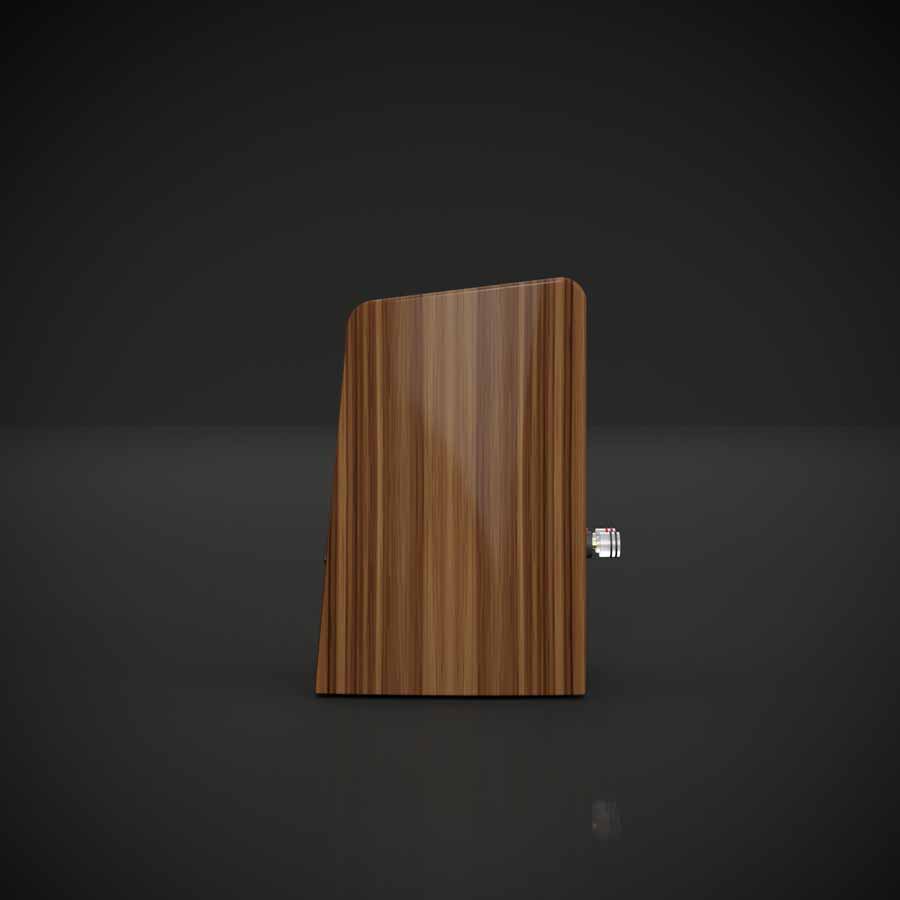
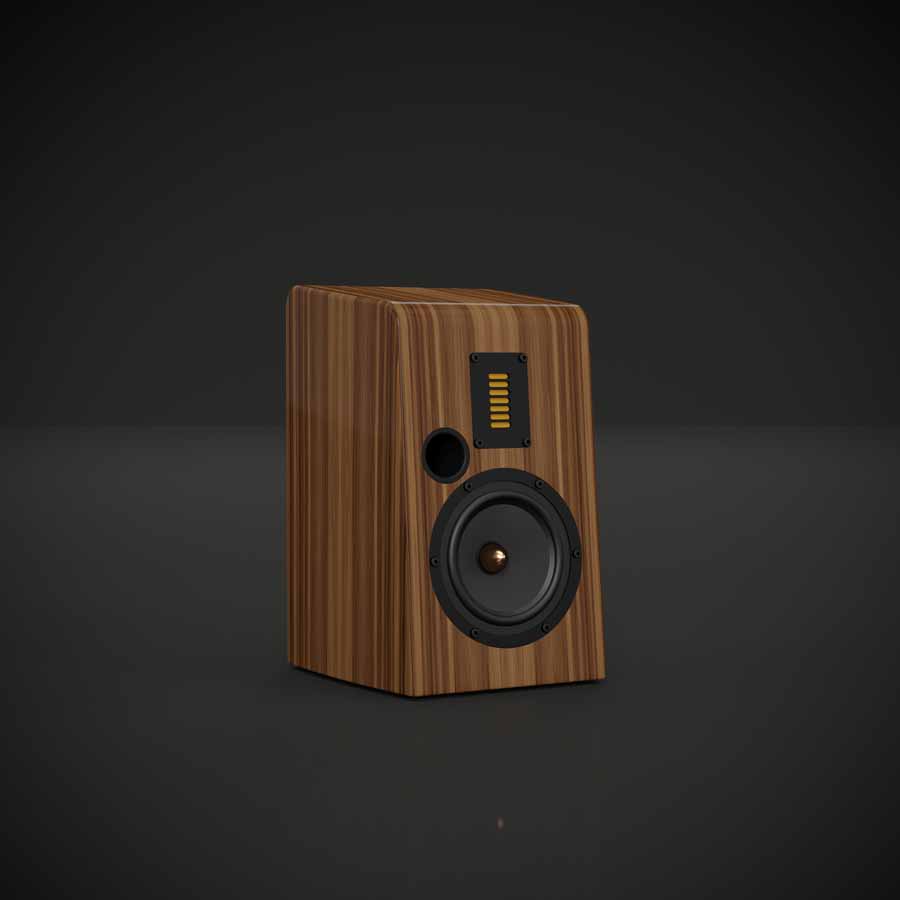
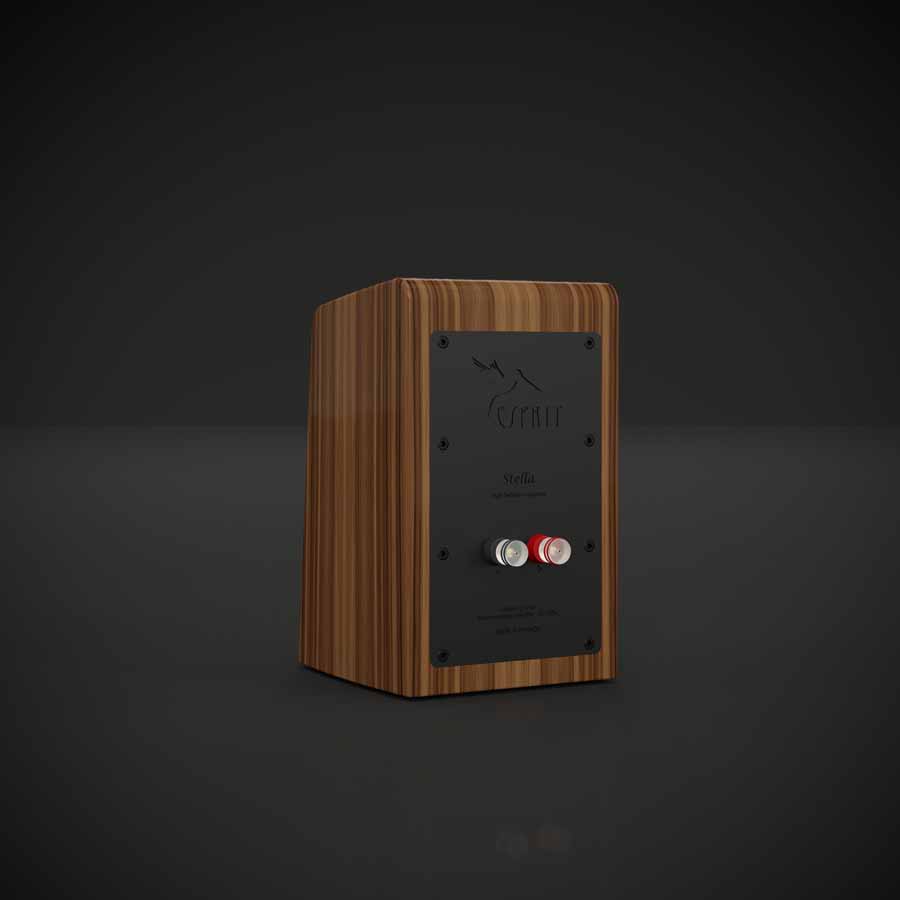
SOUND OF THE ESPRIT STELLA LOUDSPEAKERS
After about 4 days of running in, I sat down to listen to these little speakers which were placed on top of our Solidsteel stands – these are a good match, both aesthetically and to put the AMT at (more or less) ear height. The speakers were a metre and a half from the back wall, and I had the toes in towards the listening position. Being forward-firing (bass) they are pretty unfussy about their placement.
FKA twigs’ EUSEXIA album was first up on the Auralic/Lampizator front end. This is a busy record with lots going on in the mix, and I’ve found it an interesting record for listening to the soundstage, particularly the William Orbit-influenced (I looked on ROON and they mention this too) Girl Feels Good tune. It has to be said that the Stellas are very (very) good with the whole imaging. Those synth arpeggios that are meant to sit still in the mix do just that, whilst those sounds and noises that are meant to fly all over the soundstage also do just that. FKA twigs vocal is well isolated in the mix and slightly forward and up in the mix. The AMT is bringing its sprinkling of fairy dust here and adding that air and space to the upper frequencies. This is a lovely thing to hear and with the opening synth noise of Room of Fools starting from well beyond the right-hand speaker and moving over to the left speaker, and totally sucking you into the tune. However Esprit has implemented the AMT, they have certainly got it right. High frequencies are well extended but without any kind of harshness or irritating artefacts.
You’d expect a little speaker like this to be compromised in the bass department (and to an extent it is), but you can crank the volume up a bit and the speakers spring to life in the bass department. It’s not trouser flapping, but it’s fast, tight, and detailed. Ported designs can suffer from a feeling that you are hearing the port, but the Stellas seem to be pretty tuneful in this area. A sub might flesh the bottom end out a bit more, but, to be honest, I didn’t feel I was overly missing out on anything, though I suspect many will buy the Stella and add a sub at a later date – certainly, if you use Stella for HiFi and film duties, a sub will be useful. However, for as compact a speaker as the Stella is, the sound that it manages to make in the bass is pretty impressive, and you’d be forgiven for thinking you were listening to a somewhat bigger speaker. Good To You by Oliver Nelson, The Golden Boy is a dance track that continues this theme in the bass department, with the kick laying the foundation on which the rest of the track builds. Let’s be honest, physics kind of dictates that these aren’t going to shake the foundations, but in the right-sized room, these are going to satisfy most people’s bass addiction, and they are certainly well-paced and timed in this area.
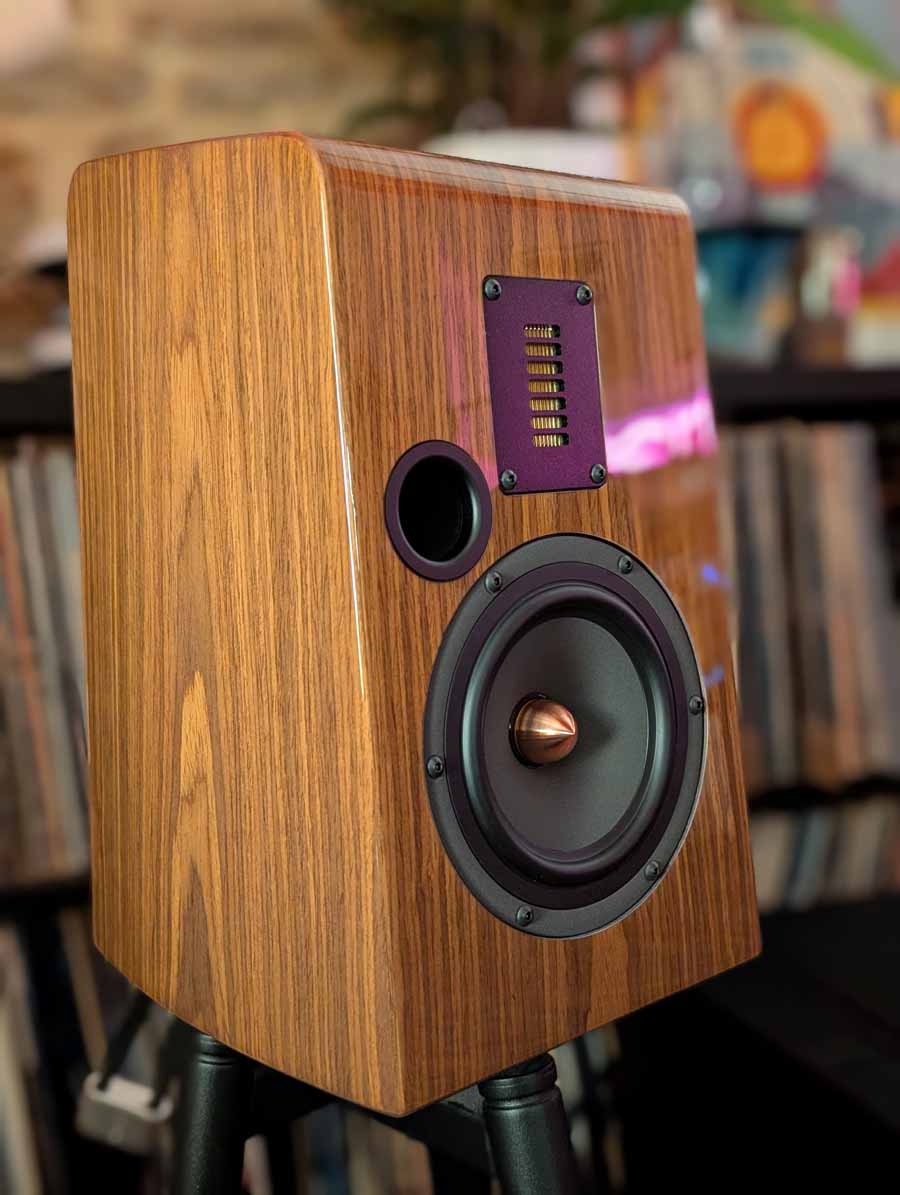
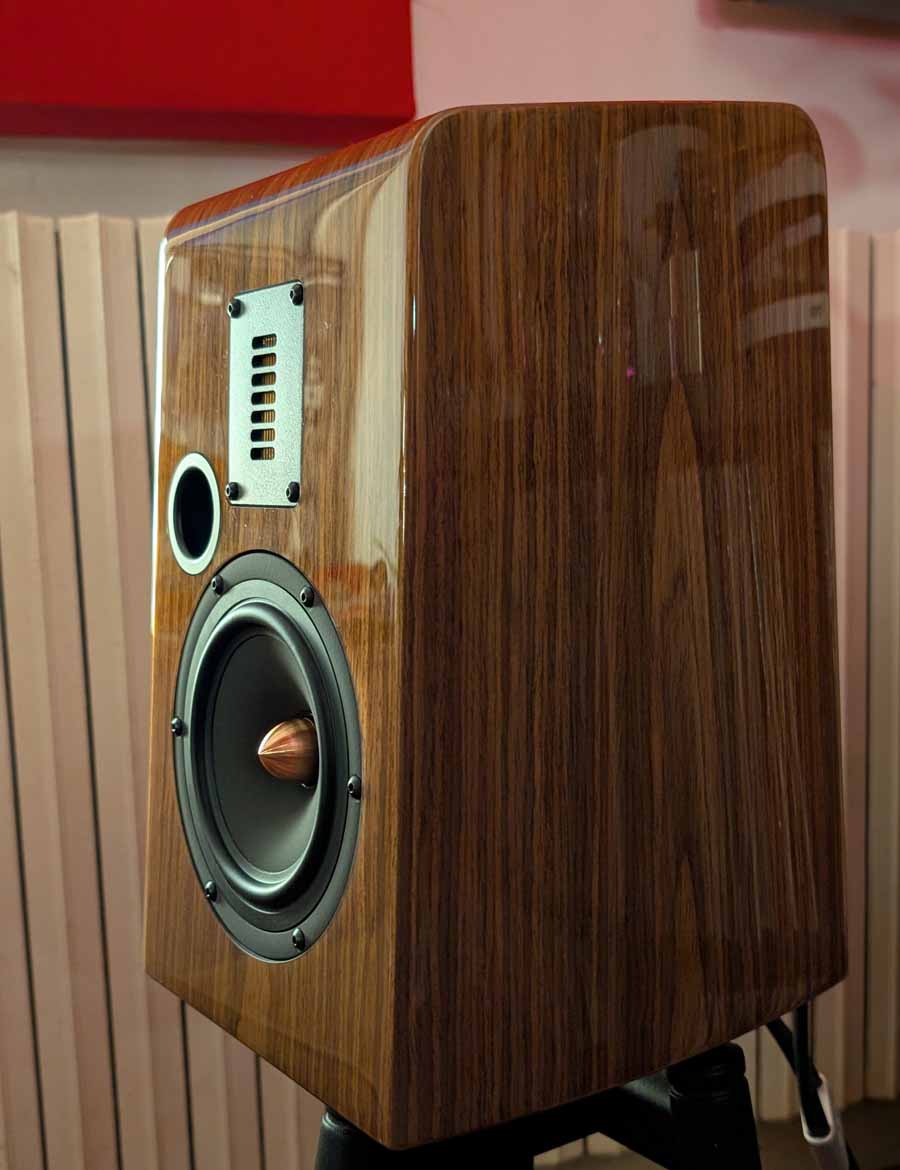
The Stellas are certainly a refined-looking loudspeaker, but that refinement also carries across into the sound that comes out of them. Now, let’s get one thing out of the way; when I say refined, I don’t mean lacking fun or that they are boring, and I found myself tapping my feet along to the tunes that ROON picked for me whilst I was writing my listening notes up. I’d suggest a lot of that “refinement” I’m talking about is actually a lack of colouration from the cabinets, and it’s clear that they have been designed with this in mind. This uncoloured nature certainly helps with the sense that there is a clarity to the sound that you are hearing – it also helps with spatial details and effects, as outlined earlier.
Allan Taylor is playing at next year’s Audio Show Deluxe near Silverstone, and so I thought I’d give The Tennessee Waltz from his Behind The Mix album. I chose this track because it’s pretty simply recorded and has a live feeling to it. Allan’s vocal comes across wonderfully, with small inflections and details of things like sibilance being well evident. The Dobro’s steeliness comes across really well, and so does Taylor’s guitar playing, with you being almost able to see his fingers moving on the fretboard. This latter point is a good one to make, I think, as being able to see the artist in front of you is a big part of the whole listening experience for me. There are also noises of the instruments moving or making noises in the background of this particular track, and the Stellas simply don’t hide anything. Fans of records like Jazz At The Pawnshop will like these speakers, I reckon.
I wanted to blast something that I thought might faze the Stellas, and so I chose Body Count’s excellent eponymous album from 1992 and the track Bowels of the Devil. This track is really busy, and I play it a fair bit when reviewing kit. On well-done big speakers, it has everything, but on the Stellas it could have done with a bit more oomph in the bass for my taste. The detail in the snare and cymbals is all there, but I’d have loved just a smidge more impact from the bass kick on this track. However, KKK Bitch comes on, and the bass guitar and drums at the start of the track sound great with me being able to hear how the two play off each other. From a timing and rhythm perspective, these little speakers are great. I just think that if your particular bag is metal, then you might want to look further up the Esprit range if your room and pockets can accommodate. However, I played C Note from the same album, which is a pared-back track, and you can really hear the detail in the tone of the guitar and the playing. Voodoo comes on and I begin to reevaluate my thoughts on metal and the Stellas; it’s still not as impactful as I’m used to on our reference speakers (big floorstanders), but you do kind of end up not missing that oomph at all. Make of all that what you will, but I really did try to throw these speakers.
Flipping things on their head, I put on Carroll Vanwelden Sings Shakespeare Sonnets 2. This is a really nicely recorded and produced record, and the Stellas really do shine on this kind of music. Piano is natural sounding, bass is ample, and the rasp of the horn on Let Those Who Are in Favour comes across spectacularly well into the room. Again, I’m drawn to the detail, timing, and the way her vocal hangs in the room in front of me. The contrabass and (I think) claves on O, From What Power play off each other really well, with each pluck of the bass strings being individual and very easy to pick out of the mix. The piano on I Never SAW That You Did Painting was “in-the-room” realistic!
QUIBBLES
The port being on the same side of the front of the speakers spoils the otherwise beautiful aesthetic a little bit.
Can get a bit confused on less-than-perfectly recorded and hectic material.
CONCLUSION
The Stella from Esprit is a lovely little speaker that, the more I listened to them, the more I really loved what they brought to the listening experience. They are detailed throughout the frequency range, and the soundstaging is spectacularly good. They also go low enough to satisfy most people, and the way rhythm sections play off each other is excellent.
What I particularly enjoyed about these speakers was their timing and speed of delivery. Nothing hung in the air that wasn’t meant to, and this really does draw you into the music – and surely that’s what this is all about.
Cost is pretty high for such a compact loudspeaker, but this is not a speaker that has been mass-produced in a factory in the Far East, and it has pricey components inside. French manufacturing and the high-quality parts used all add up and go a long way to justify the asking price for this speaker. It also looks gorgeous, with the caveat I mentioned about the positioning of the front-firing port and me preferring mirror-images.
I’m giving these a high 5 Hearts score. They look lovely, sound fab, and are only really let down by factors that is inherent in all small speakers. However, with this in mind, for as compact a speaker as these are, they performed spectacularly well, and I urge you to get onto your dealer for a demonstration.
AT A GLANCE
Build And Features:
Beautifully finished and exceptionally well put together
Look very nice and refined
Compact enough to be used in small spaces and given their forward firing port, perhaps on shelves
I’d have liked to see mirror images
Made in France
Sound Quality:
Fast and detailed throughout the frequency range
Bass is more than acceptable for such a small speaker
The AMT is very well implemented and adds a bit of magic and air to the top end that really draws you in
Soundstaging and imaging are excellent
Value For Money:
These aren’t cheap, but then you get what you pay for. They are not made in the far east (Made in France) and the component parts are all quality items – this adds to the cost, but also the pride of ownership, and I can well see buyers being a certain kind of person that demands craftsmanship and provenance
We Loved:
The looks are to die for with the caveat that the port on the front improves usability but does affect the looks
Uncoloured and detailed sound
Bass enough if you are realistic about the room they are used in
We Didn’t Love So Much:
Nothing really other than the port, which is just something that caught my personal attention – I’m sure most won’t give a monkey’s toss
Elevator Pitch Review: French brand Esprit High End Audio is perhaps best known for its cables, but that is now about to change somewhat with its fairly recently introduced range of loudspeakers. The Stella is the smallest in their range and can be easily accommodated on stands or shelves in small to medium-sized spaces. They are beautifully put together, finished, and use quality components throughout. Sonically, they are uncoloured and clean-sounding without venturing into a clinical presentation. Soundstaging is wonderful, and the AMT tweeter has been put to great use to give a real feel for space and air in recordings. Get yourself a listen!
Stuart Smith
SUPPLIED BY ESPRIT HIGH END AUDIO
SUPPLIED SPECIFICATIONS
- Mode: 2-way
- Nominal impedance: 4 Ohms
- Recommended power: 40-100 Watts
- Frequency response: 50 to 30,000 Hz
- Sensitivity: 87 dB

























































